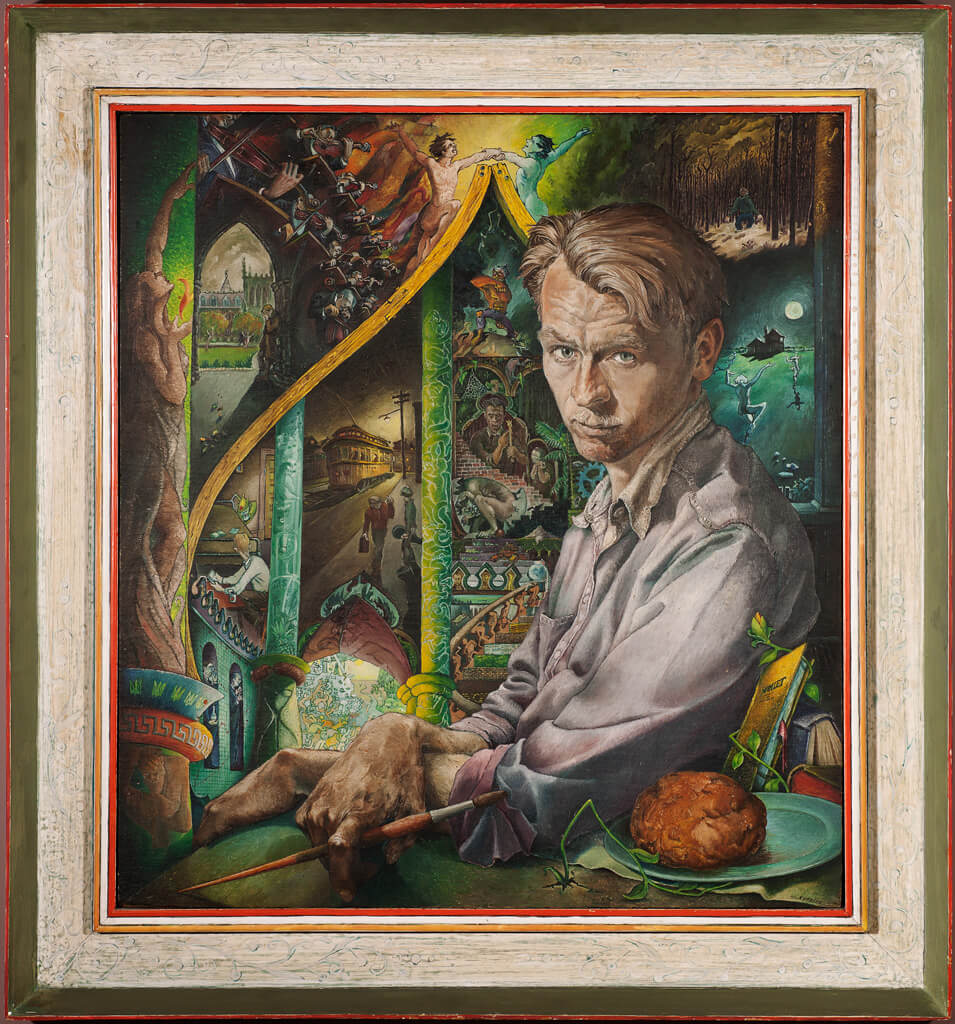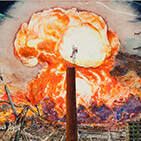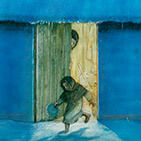Portrait of the Artist as a Young Man 1950

William Kurelek, Portrait of the Artist as a Young Man, 1950
Oil on plywood, 65.5 x 59.6 cm
Loch Gallery, Calgary
Portrait of the Artist as a Young Man is Kurelek’s first mature work, created immediately following his sudden departure from the Ontario College of Art. It marks Kurelek’s decision to pursue his artistic talents professionally and reveals his early identification with Stephen Dedalus, the protagonist in James Joyce’s 1916 novel of the same title. Later Kurelek explained that he initially titled the self-portrait The Romantic, “because I represented myself as a dreamer: the Joycean artist about to burst into beautiful bloom, but not quite there yet.”

Teeming with symbolism and perceptual layers, the self-portrait is a painting within a painting. It shows the artist before an imposing canvas depicting an “imaginary temple” containing murals representing “different incidents in my life” in Stonewall and Winnipeg. These include a vignette of the artist at the University of Manitoba, clothed in a brown corduroy jacket, “the cheapest I was able to buy,” with a hand clasped over his face to alleviate the eye pain he was experiencing.
The painting contains fantastical, nightmarish scenes, including a monstrous Samson or Herculean superman wielding a bone and a man emerging from an egg resembling the scene in Geopoliticus Child Watching the Birth of the New Man, 1943, the allegorical painting by Salvador Dalí (1904–1989) about the dawn of the nuclear age. A copy of Shakespeare’s Hamlet leans conspicuously behind a loaf of bread in the right foreground. This play had been reclaimed by twentieth-century writers and artists celebrating its unwavering acceptance of a universe without inherent meaning.
Kurelek completed the painting over “four consecutive days,” working maniacally, his state enhanced by the metabolic medication he had been taking since university for an underactive thyroid. At the time he was living in Edmonton, working as a labourer, and saving money for a journey to Mexico.
Kurelek stated that the painting reflects the influence of painters such as Jean-Baptiste-Siméon Chardin (1699–1779) and Hans Holbein (1497–1543) and the Pre-Raphaelites and Mexican muralists. He had become familiar with these artists while attending the Ontario College of Art in Toronto and reacquainted himself with them in reference books at Edmonton’s Central Library. The work also shares an affinity with the paintings of Kurelek’s close confidant at the University of Manitoba, fine art student Zenon Pohorecky (1928–1998).
Curator Mary Jo Hughes has speculated that the self-portrait is compositionally indebted to Picture of Dorian Gray, 1943–44, by Ivan Albright (1897–1993), which appears in the 1945 Hollywood adaptation of Oscar Wilde’s novel. Although Kurelek never mentions the film, his interest in popular cinema, Victorian literature, and self-portraiture make it difficult to believe he was unaware of it.

 About the Author
About the Author
 More Online Art Books
More Online Art Books
 Acknowledgements
Acknowledgements